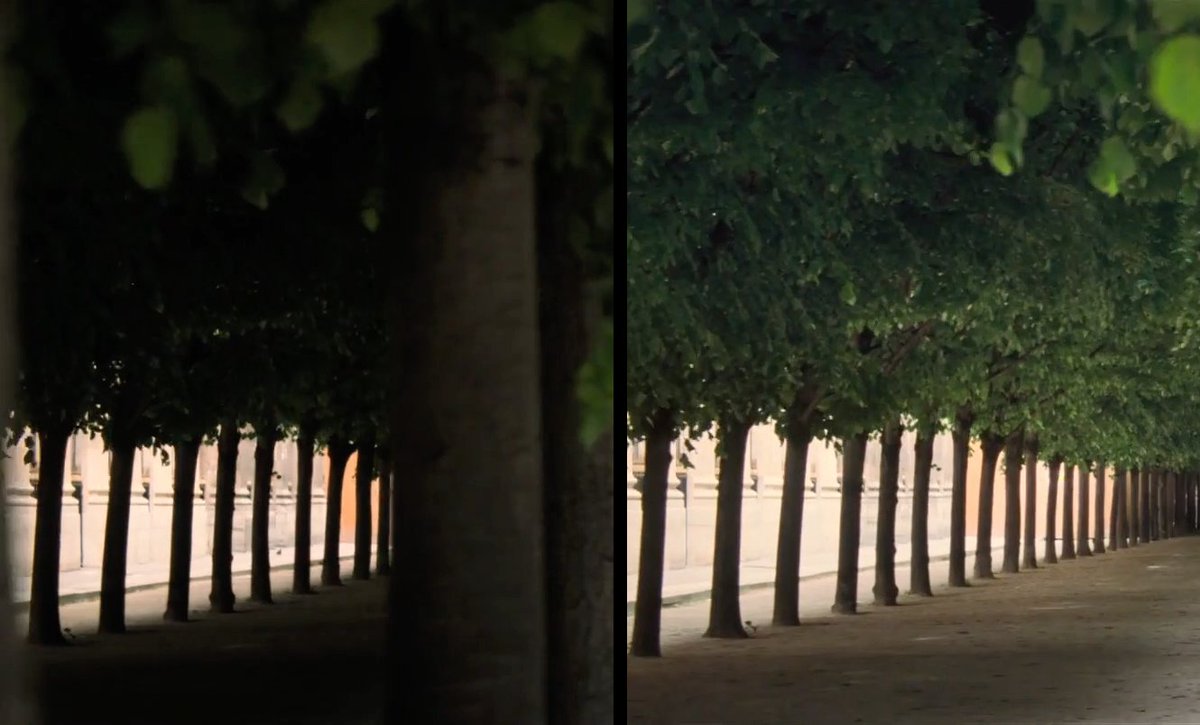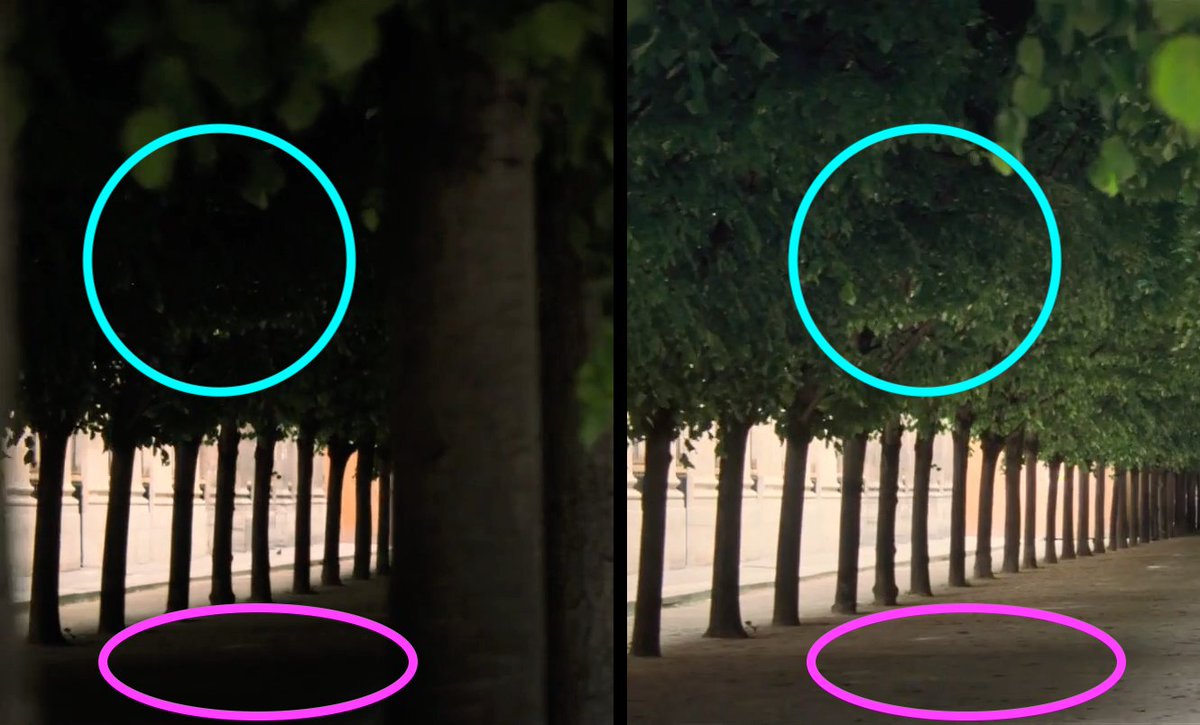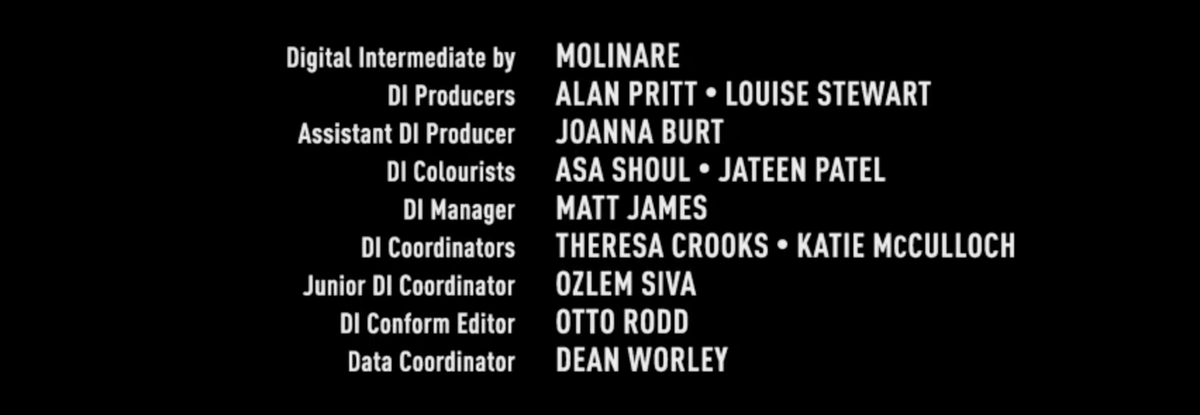"Mission: Impossible - Fallout" (2018), cinematography by Rob Hardy
This shot is compelling on many levels. It takes its time, its classic composition, its deliberate moves mirror the emotional journey of Ethan and Ilsa& #39;s relationship. But you don& #39;t have to be a film scholar to *feel* that something special is going on here.
Currently cameras can not see detail inside of dark shadows and also decode super-hot surfaces hit with sunlight simultaneously. It& #39;s most obvious when the camera moves from interior [dark] to exterior [bright] (or vice versa). https://twitter.com/tvaziri/status/1305229775867265024">https://twitter.com/tvaziri/s...
There are a lot of great examples in the above thread, the most glaring is this one from "It& #39;s Kind of a Funny Story" (2010), where you can feel the camera operator irising down (reducing the amount of light hitting the sensor/film gate) just after camera goes through the door.
This exposure rack can be done in-camera, but it takes careful choreography & lots of rehearsal. One can also choose to do this kind of exposure rack in the color timing session. This was true in the photochemical days as well, but we have a LOT more precision in the digital era.
Also, in the digital era, you can choose to recolor/re-expose *certain* areas of the frame with great flexibility.
What does all this have to do with that "Fallout" shot?
What does all this have to do with that "Fallout" shot?
Without animating anything, there is no way for the camera to properly expose for the deep dark shadows inside the tree tunnel *and* to be able to clearly see anything in the bright daylight. Rather than doing an in-camera exposure rack during filming...
The filmmakers chose to do the work in color timing/digital intermediate stage using the foreground tree as a convenient place to hide a soft matte transitioning between two different exposure settings.
A comparison of an early and later frame from the shot.
A comparison of an early and later frame from the shot.
This kind of color and exposure work is unsung, and not only balances the movie so shots that cut against each other feel natural (that were filmed weeks apart, sometimes on different continents), but adds richness and mood to the film. This shot was done by colorist Asa Shoul.
Thanks to @andrewrjw for helping me sleuth out Asa& #39;s role in the shot. I& #39;m also sure some folks might be furious at my oversimplification of the process, but it& #39;s hard to explain something this nuanced and complicated in tweets, so sorry.
Anyway, beautiful shot.
Anyway, beautiful shot.
Also, we do this in visual effects and animation all the time, if we& #39;re trying to emulate the feel that the movie was recorded using "cameras". https://twitter.com/tvaziri/status/1064964510333595648">https://twitter.com/tvaziri/s...
In that RANGO example, I wanted to bring out more detail in Rango& #39;s face when he turns his head, so Erich Ippen and I built the shot so he would be more in silhouette at the beginning, then I did a rack exposure over the whole frame when he turns toward camera.
I did a subtle one here, too, first exposing for the aliens in shadow, then irising down once the camera passes through the foliage to properly expose the super bright Enterprise. Look at the distant clouds throughout the shot to see the exposure rack. https://twitter.com/tvaziri/status/1192892247357808640?s=20">https://twitter.com/tvaziri/s...

 Read on Twitter
Read on Twitter




